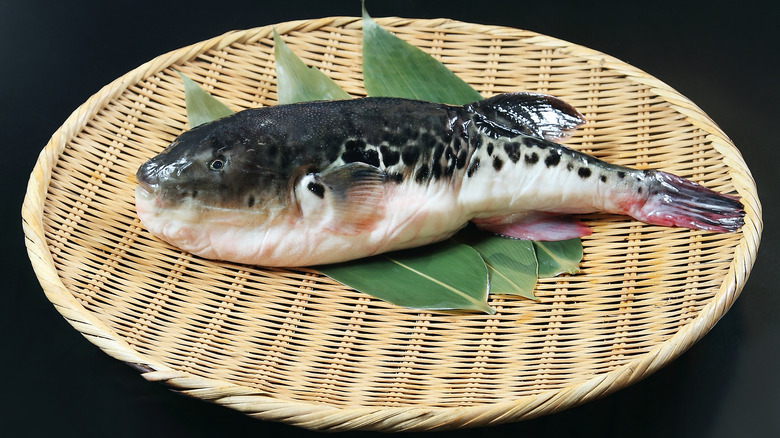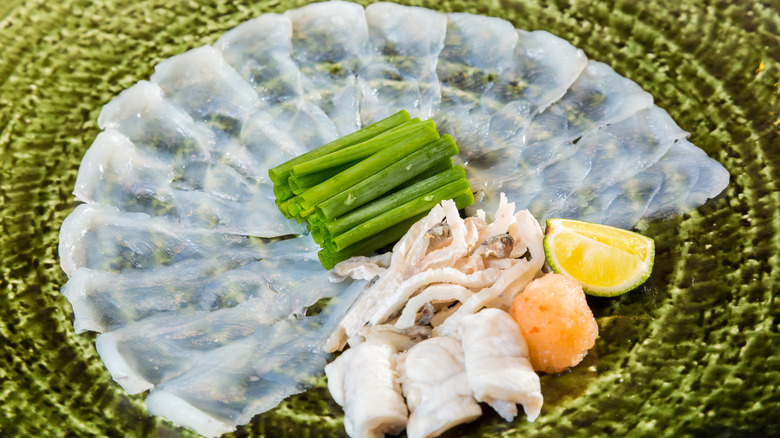How Long You Have To Study In Japan To Cook Puffer Fish
Fugu, also known as puffer fish, globefish, or blowfish in English, has often been associated with death for diners who risk their lives to taste this Japanese delicacy. A neurotoxin called tetrodotoxin (TTX) fills this fish's innards, which, if consumed in high doses, can cause a person's nerve impulses to shut down. Within hours, the person will experience nausea and paralysis, and then, their heart will stall (via The New York Times). Between 2008 and 2018, the Japan National Health Ministry reports that a total of 295 people became ill and three died after eating fugu. Most of these poisonings, however, happened when people prepared the fish themselves at home (via Japonica Publication). So why would anyone eat a type of fish that could be "200 times more deadly than cyanide" (per BBC)?
A prehistoric fish, the jawbones of fugu have been found across different sites in Japan dating back more than 4,000 years (per The New York Times). During the Azuchi–Momoyama period from approximately 1568 to 1600, many samurai met their deaths from eating the poisonous puffer fish. The "Kawabuta Eating Ban Ordinance" was issued, which led to a ban on fugu that extended beyond the Azuchi–Momoyama period and well into the Meiji era (via Food in Japan). In 1888, Shimonoseki City was the first place to lift the ban, and Shunpanro became the first restaurant licensed to serve authentic fugu (per Travel + Leisure).
How to become a fugu specialist
"The authentic dish requires not only authentic ingredients, but also authentic skills," said chef Yutaka Sasaki, who has trained as a fugu specialist for 45 years (via Eater). According to Sasaki, an apprenticeship can take up to 10 years in order to learn how to properly handle the poisonous fish. Preparing fugu properly sounds deceptively simple: cut around the mouth, peel the skin off, wash off the jelly with salt, then remove the eyes, and gut the fish without puncturing the highly toxic ovaries or liver. Then, fillet the fish as you would any other sashimi. You can also chop the head into a few pieces to be used for a stew later (per Kobe Jones).
Fugu meat, considered a refined and luxurious dish, is white meat and often served as thin, raw sashimi slices. The meat can also be featured in nabe — a hot pot dish — or it can be fried or used for fugu hirezake, which features a deep-fried fish fin placed in hot sake (via It's Japan Time). The texture of fugu varies depending on how it's cooked, but the fish's bright, firm white flesh carries a subtle yet powerful flavor that seems to compel people to tempt death (per EatDelights). "There are so many people who have never tried it, but they want to at least once in their life," Chef Sasaki told Eater. "It has an indescribable taste. It's mysterious, it's delicious — really delicious."

